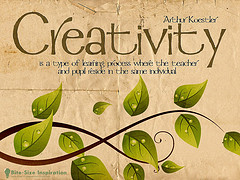Browse by Tag
- "Real" Innovation (2)
- Alignment (6)
- Business Innovation (9)
- Business Plan (2)
- Business Plans (1)
- Creativity (24)
- Critical Success Factors (4)
- Entrepreneurship (9)
- Global Competiveness (4)
- Human Side (11)
- India (1)
- Innovation (4)
- Innovation Consulting (18)
- Innovation Killers (3)
- Innovation Management (18)
- Innovation Tools (17)
- Innovation Training (24)
- Innovations (7)
- Inventions (16)
- IT Innovation (1)
- Leaders (5)
- Leadership (20)
- Leadership Development (13)
- Organizational Leadership (2)
- Organizational Strategy (20)
- Personal Values (6)
- Prediction (5)
- Strategic Innovation (38)
- strategic planning process (4)
- Strategy (3)
- Training (1)
- Vision (5)
- Weekly Dose (8)
Posts by Month
- 2014
- 2013
- 2012
- 2011
- 2010
- 2009
- 2008
- 2006
3 Books Full of Cool Innovation Tools
Every organization needs a basket of tools and methods to help find innovative ideas and solutions. Give access to the right tools to the right people based on the nature of their jobs and the types of challenges that needs to be solved. Surround them with proper innovation management processes, and the tools will help generate a culture of innovation and new profits. We are happy to share three of our favorite books on innovation tools.

The Takeaway
Innovation is an ever-evolving discipline. Many practitioners and academics have invented and popularized many tools to help you accelerate your innovation efforts.
Over to you. Please comment below.
- What other books would you add to the recommended reading list?
- What is your favorite innovation tool?
- In what area of innovation would you like to see new tools created?
6 Creativity and Innovation Books for Your Office
In my experience, all ideas come from an emotion of creativity. Many ideas are easy to find. However, the breakthrough ideas need staff that is challenged to solve the greatest problems Books in this category will help you identify the problem space as well as solution space by tapping into the hearts and minds of your people.

|
Managing Creativity and Innovation (Harvard Business Essentials) Packed with practical information designed for business readers and managers at all levels, this essential volume offers insights on managing creativity in groups, developing creative conflict, and using technology to help foster innovation. |

|
Think Better: An Innovator's Guide to Productive Thinking by TimHurson There are thousands of books about thinking. But there are very few books that provide clear how-to information that can actually help you think better. Think Better is about Productive Thinking - why it's important, how it works, and how to use it at work, at home, and at play. Productive Thinking is a game changer - a practical, easy-to-learn, repeatable process that helps people understand more clearly, think more creatively, and plan more effectively. It's based on the thinking strategies that people we celebrate for their creativity have been using for centuries. Tim Hurson brings Productive Thinking out of the closet and presents it in a way that makes it easy for anyone to grasp and use - so you can think better, work better, and do better in every aspect of your life. Think Better demonstrates how you can start with an intractable technical problem, an unmet consumer need, or a gaping chasm in your business strategy and, by following a clearly defined, practical thinking process, arrive at a robust, innovative solution. Manycompanies use the Productive Thinking model to generate fresh solutions for tough business problems, and many individuals rely on it to solve pressing personal problems. |

|
Creativity and Innovation in Organizational Teams stemmed from a conference held at the Kellogg School of Management in June 2003 covering creativity and innovation in groups and organizations. Each chapter of the book is written by an expert and covers original theory about creative processes in organizations. The organization of the text reflects a longstanding notion that creativity in the world of work is a joint outcome of three interdependent forces--individual thinking, group processes, and organizational environment.
|

|
The author of the bestselling The Art of Innovation reveals the strategies IDEO, the world-famous design firm, uses to foster innovative thinking throughout an organization and overcome the naysayers who stifle creativity. |

|
Leadership for Innovation: How to Organize Team Creativity and Harvest Ideas by John Eric Adair New ideas and new ways of doing things are one of the main ingredients in sustained business success, but how does one create the right conditions for innovation?
|

|
CATS: The Nine Lives of Innovation by Stephen C. Lundin It's time to let the CATS out of the bag . . . Curiosity might have killed the proverbial cat, but without it very real achievements would never occur. With this book as your guide, you'll learn how to spark your innate curiosity, pounce on problems in ways you never imagined, and enjoy greater success and satisfaction at work-and in your personal life. Playful, profound, and positively upbeat, CATS provides what you need to tap into your power of innovation-and then unleash it in every member of your organization. While most business thinkers view this challenge from the top down, Stephen Lundin sees the subject from a CAT's-eye view, explaining how to get every employee--no matter what level--to think and act in innovative ways. Inside, he examines the four challenges to innovation and offers practical measures aimed at conquering them. |
The Takeaway
Challenge your staff to think creatively about customer needs in new and unique ways.
Your Turn. Please comment below.
- What creativity and innovation books would you add to the list?
- Which of the books on the list did you enjoy the most?
- If only one book could be written on Creativity and Innovation what should its focus be?
INNOVATION IN 37 TWEETS
Innovation is an often written about topic. Many books and articles have been created including one of our favorites Innovation Engine written by DeSai Group co-founder Jatin Desai. We are all pulled in many directions each day. We can find it hard to spend the time reading worthwhile articles and books. Therefore, in the age of Twitter we bring you Innovation in 37 Tweets. Innovation thoughts expressed in 140 characters or less.
QUESTIONS YOU SHOULD ASK YOURSELF
- Are you relying on performance engine (short-tem growth) or using innovation engine for long-term growth?
- Do you have a solid business sponsor for the game of innovation in your organization?
- How different is your business model and its value proposition in comparison to others in the marketplace?
- How much more top-line growth can you achieve out of your current business?
- Do your managers have the insight to define new problems before others do?
- Are you skipping the step of assessing organizational readiness for innovation?
- Innovation Readiness: business case, sustained sponsorship, culture/systems, financial resources and program management?
- Is your business strategy Pioneer, Fast Follower, Imitative, Dependent, Low-cost or Specialization?
- Does your Innovation Strategy communicate why, who, what, how and when?
- Do you have too many ideas, just enough ideas or too few ideas to innovate?

STATEMENTS YOU SHOULD CONSIDER
- Innovation is bringing heart into work.
- Nucleus of innovation is tapping into people's hearts.
- Innovators have a thirst for knowledge.
- Waiters wait, managers manage, innovators create value.
- A rhythm for growth - harvesting a cultural balance between performance (left brain) and exploration (right brain).
- Your Innovation Goal should be measurable, customer focused and capable of delivering value.
- Organizations must complement the operational performance mind-set with the innovation execution mind-set.
- To achieve sustainable growth companies must better integrate product innovation with process and service innovation.
- Evolve your mechanistic, bureaucratic and hierarchical practices model towards an innovation-driven executionmodel .
- New value creation - innovate to generate differentiated new value and profit.
- Once you are ready to play the game of innovation, you will need an Innovation Scorecard.
- Create a business case for innovation and supporting innovation strategy linked to business vision and goals.
- Build a pipeline of corporate innovators -- the key talent for future growth (intrapreneurs).
- The average life span of companies on the S&P 500 has shrunk from 75 years in 1930s to just 15 years in 2000s.
- Innovation can build continuous new S-Curves for your organization.
- Without engaged employees, sustainable innovation is not possible.
- Without continuous failure there is no continuous innovation or evolution.
- Most managers are very likely to mobilize an idea if they have 80% clarity about it.
- Innovation Intent is easier to identify if the senior team has already declared its strategic intent.
- Rampant commoditization and disorder suggests that old methods of diagnosing growth challenges have been wrong.
- Globalization and Automation are causing a shortened life span for products and services.
- Innovation, if done right, should be an input to strategic planning, not an outcome.
- Optimize your innovation engine on the innovation highway - alignment, insights and mobilization are key.
- To begin your innovation journey, leaders in your company must take time to develop the innovation strategy.
- Sustainable competitive advantage necessitates sustained new innovations.
- Build your Innovation Engine to accelerate exploitation of new business ideas worthy of pursuing.
- Build your Innovation Engine to improve employee attraction, engagement and retention.
The Takeaway
Regularly re-consider your beliefs about succeeding at the game of innovation by challenging yourself.
Over to you. Please comment below.
- What other tweet length questions should we ask about Innovation?
- What other tweet length statements should we challenge ourselves with on a regular basis?
- What is your best advice on Innovation in 140 characters or less?
Innovation in Highly Regulated Environments - Global Bio-Pharmaceutical Case Study
Pharmaceuticals is an industry that impacts each one of us. Due to the highly regulated environment, it is difficult to easily drive product innovations.
Four Focus Areas for Industry Innovation
Therefore, Pharma must focus on 1) business model innovations, 2) process innovations, 3) delivery innovations, and 4) customer experience innovations.
Let's take a look at how a $26 Billion company with 30,000 employees, in 24 countries based in U.S.
Client Situation:
The client, a leading pharmaceutical company with international operations, was faced with a growth gap, having experienced several years of flat sales and heavy competition in U.S. and generics.
The company had recently initiated a global expansion program. However, they quickly realized that this endeavor would be limited and insufficient in meeting its future growth goals. The company's track record in organic growth and innovation was limited.
The challenge was to improve the company's innovation capacity, identify new growth opportunities, and have a showcase success within two years.

Six Stage Approach:
- Diagnosis: The DeSai Group diagnosed the client's current situation, past innovation successes and failures.
- Recommendation: Based upon these findings, recommendations for enhancing the company's innovation capacity were made.
- Ideation: Through a highly structured ideation process, DeSai and the client identified and clustered ideas into Value-Platforms.
- Evaluation: The various Value-Platforms were created, evaluated, and prioritized.
- Refinement: The high priority platforms were further expanded with detailed product and service value propositions.
- Final Refinement: Six teams were formed for each platform to further build out business briefs to lead to specific business plans within six months.
Results Are The Measure of Innovation Success
How did applying the DeSai Body of Knowledge impact the company?
- A Venture Board was established.
- Proposals were evaluated by the Venture Board composed of both internal and external members.
- Five candidate business ventures were selected having revenue potential of $350Million.
- The existing portfolio was evaluated and 25% of the ongoing projects were halted.
- The evaluation process yielded 20% of the client's R&D resources for re-allocation.
- An Innovation Board and Innovation Process Owner were established to lead the innovation projects.
The Takeaway
Through a climate and culture of innovation companies can continue to generate value for everyone within their stakeholder system.
Your Turn. Please comment below.
- How does your organization ideate future concepts?
- What has your experience been with Venture Boards and similar concepts?
- In what types of Innovation does your company focus?
15 Components of Innovation Culture
Our insight, at The DeSai Group, from working with global customers since 1983 is that leadership readiness is the most essential factor for success. Leaders may want innovation, but it is entirely possible that the midlevel managers are not ready, meaning they have no time and no resources and lack the mind-set, motivation, and skills. It is also possible that the current organizational structures are too bureaucratic to welcome innovation thinking.
Let's look at the 15 factors in the categories of Alignment, Insights and Mobilization
that control innovation readiness and improve innovation propensity at your company.
Alignment
Five alignment factors are related to a business's ability to recognize, specify, clarify and commit to the purpose of innovation and help achieve predefined business value-your target destination. There is no need to waste time and money on innovation unless it is critically linked to the business strategy.
Alignment is about strategically sponsoring, engaging, monitoring, and supporting all innovation activities at every level of the business structure. If alignment is properly executed and adjusted as the organization matures, the result will be a climate and culture of innovation for long-term sustainable business growth.
| Alignment Success Factors | Definition |
| Innovation Mandate | At the top, innovation is seen as critical to the future of our organization. |
| Leader readiness | Leaders are prepared to guide the organization's innovation efforts. |
| Employee engagement | Individuals throughout the organization are motivated to contribute to innovation. |
| Innovation support | Organization has effective systems and processes to support innovation. |
| Systematic approach | There is a clear framework, common language, along with a systematic and well-understood approach to innovation. |
What are the signs of an aligned organization for innovation? When alignment is present, you will see focus and collaboration at the right levels for the purpose of achieving organizational and individual goals for both the business leaders and for individuals. True alignment will show up in the form of employees' desire to engage at work and be effective contributors to the organization, continually looking for new ways to support the overall vision, mission, and purpose of the organization as a whole.
Alignment means that each business unit, department, team, and individual sees and understands its role and how it contributes to the overall innovation mandate of the organization. It gives them confidence that their work is valuable.

Insights
Insights reflect the importance of discovering new ideas-with art and science rather than as matter of luck. It begins with the recognition that information from many sources is essential to developing unique insights that will allow your business to achieve strategic targets.
To develop deep insights about what is possible, you must involve people from all levels of the organization, including partners, suppliers, customers, and regulators. The larger the field of information and ideas, the more dramatic, sustainable, and unique will be your pool of insights. Here we capture a collection of ideas and knowledge, connected or not to each other, for potential exploitation.
Once captured, the ideas must be organized and easily shared with others so they can be enhanced; the result becomes your idea bank. You need a disciplined process to keep the idea bank alive or, like anything else, the ideas will quickly die due to inertia.
| Insights Success Factors | Definition |
| Diverse perspectives | We incorporate a wide range of perspectives in the idea- generation process. |
| External orientation | We actively engage with the external environment. |
| Climate/Culture | Our organizational climate and culture support the generation of ideas/insights. |
| Idea flow | We have strong flow of creative ideas. |
|
Idea selection |
We select the best ideas from those that are generated on a timely basis. |
How does a company develop this competency for deep insights? In most organizations, to gain insight into projects, market positioning, and corporate performance, they develop and study performance charts, two-by-two matrices, and Balanced Scorecards, respectively. Looking at data in such a way, we are able to develop certain forms of business insights.
Similarly, innovation insight depends on finding (sometimes through visualization and highly diverse group exercises) new knowledge that leads to practical ideas for consideration. When executed well, insights enable creation of innovation platforms (a plethora of ideas to pursue a large multiyear business opportunity) and fresh ideas. This helps managers quickly make investment decisions to accelerate new and novel discoveries.
What is required for an idea pipeline to get fatter and mightier? The most important is to establish climate of trust and openness that support the creative process. You will also need tools for individuals and teams to find incremental and breakthrough ideas.
Mobilization
The focus here is strictly on innovation execution. Our data show that most organizations are weakest in this area. Mobilization reflects the reality that even with strong alignment and a good flow of insights, innovation is only valuable when it is translated into results-that is, executed. The organization with the best idea is not always the winner. Rather, the organization with the ability to execute the best idea is the winner. Especially in today's competitive and fast-paced environment where maturation from unique idea to commodity is very swift, execution in the early stages of innovation is critical for success.
| Mobilization Success Factors | Definition |
| Resources | The organization allocates sufficient resources to innovation. |
| Governance | There are effective governance structures and processes for innovation. |
| Portfolio | Through a structured process, the company effectively manages a portfolio of innovations selected for implementation. |
| Change management | Leaders create the adjustments required to ensure all innovations achieve full realization. |
| Execution | The company has a clear process for successfully bringing projects through the pipeline to achieve positive results. |
Mobilizing also means you must capture the maximum value of an innovation before it is duplicated, continually improving that product of service to stay ahead of the competition. Effective mobilization calls for sufficient resources; quick and effective decisions; clear thinking about the human impact of new approaches; and continuous learning about how to translate innovations into reality faster and successfully over time.
In summary, mobilization is a set of processes, methods, tools, and structures that will allow employees and managers to operationalize ideas for implementation and venturing in an informed way to achieve targeted business outcomes.
Alignment + Insights + Mobilization = Success
Alignment, insights, and mobilization are all happening at the same time. All three play critical roles in the success of innovation and therefore, the long-term sustainability of your organization. To be successful, you must manage each of them and the trade-offs between them. An idea that has great merit but would struggle to be mobilized in your organization may not be as valuable as an idea with less merit that can quickly be tested and mobilized. A fantastic idea that would be great for your consumer but does not align with your organizational purpose will struggle to receive funding and support over the long term. A great idea for the market but without strong leadership alignment will stay dormant.
The Takeaway
As your organization builds the innovation muscle and the innovation engine continues to grow, you will need to adjust the integration points as a part of the overall business planning conversations and activities at the top.
Your turn. Please comment below.
- Do you feel that Alignment, Insights and Mobilizing should receive equal weight in the process?
- What have you done to commercialize your idea pipeline?
- Which of the 15 factors do you find most important?
Intrapreneurs Must Reference World Authorities To Build Proposals
Intrapreneurs are the purple horse in the room. They are working as entrepreneurs within a larger enterprise. Gifford Pinchot III coined the term Intrapreneur to describe them. They want to innovate. Often, corporate culture limits or prevents their ability to succeed.
Business Cases and Proposals Need Research
When I teach intrapreneurs to certify them in the DeSai body of knowledge they learn to create a business case. To turn that case into a full-blown, well researched proposal the intrapreneur needs to reference credible worldwide authorities.

My Favorite Sources
20 of my favorite sources are shown below. These sources are universal. They can be used by for profits and non-profits, large companies as well as small ones. Good luck and may "the force be with you" during your research process.
| 1 | Worldmapper Project
Provides cartograms - maps where countries are resized according to a range of economic, social, demographic and resources criteria |
| 2 | World Trade Organization
Trade statistics, trade news, economic research and publications |
| 3 | World Economic Forum
Research on wide range of issues related to its agenda; also organizes Davos summit annually dealing with global issues |
| 4 | World Bank
Economic and financial statistics, including commodity prices |
| 5 | Wikipedia
Open-source based online encyclopaedia, which is a good first lead for information on many topics BUT always check references and data wherever possible |
| 6 | US Bureau of Labor Statistics
Research and statistics on all aspects of the labor market in the US, plus international comparisons |
| 7 | United Nations
Data and reports relevant for many trends including economics, demographics, Millennium Development Goals |
| 8 | Strategy & Business
Surveys, articles, publications on a range of business topics, on both the Booz site and Strategy & Business site |
| 9 | RAND Corporation
Research areas include security, international affairs, science & technology, health, infrastructure |
| 10 | PriceWaterhouseCoopers (PWC)
Consulting/Accounting firm offering research/publications on range of business topics |
| 11 | Org. for Economic Cooperation & Development (OECD)
Publications and statistics on economic and social issues, including macroeconomics, trade, education, science, innovation |
| 12 | McKinsey Quarterly
Surveys, articles, publications on a range of business topics |
| 13 | McKinsey
Surveys, articles, publications on a range of business topics |
| 14 | International Labour Organization (ILO)
Information and news on international labour standards and human rights; provides international labor statistics and research |
| 15 | IMF
Range of time series data on GDP growth, inflation, unemployment, payments balances, exports, imports, external debt, capital flows, commodity prices, more and other economic and financial indicators |
| 16 | IMD
Research, articles and information on critical business topics and issues; and home of the World COmpetitiveness Center |
| 17 | IBM
Range of research, particularly related to technology industry |
| 18 | European Commission Eurostat
Publications and statistics on economic and social issues, including macroeconomics, trade, education, science, innovation |
| 19 | CIA
World Factbook offers basic but useful country information; other reports cover security related matters e.g. fuel use |
| 20 | Boston Consulting Group
Surveys, articles, publications on a range of business topics |
The Takeaway
Excellent research sources help an Intrapreneur change an idea from "I know I am correct" to "of course our company must adopt your proposal."
It is your turn. Share your wisdom. Please comment below.
- What are your indispensible research sources?
- What techniques help you best prepare a persuasive proposal for higher management?
- What is the relationship between the perceived risk of the opportunity and the length of the proposal you submit?
Leadership Challenge: Ban Inertia for Sustainable Organizational Health
A place of inertia; indecision, inability to act or move forward, fear of the unknown, not enough information or knowledge, resistance, a lack of direction or clarity. We've all been there at some level, at some point, be it professional, organizational, health, investments, relationships or a major purchase.
Implementing sustainable innovation in your organization where there is resistance to change is a lot like changing your diet and adopting a regular exercise program for healthier lifestyle. It makes sense, everyone sees benefits, but implementation is frustrating - our habits may not be the healthiest, but we know them and have a comfort level. We live with them daily and the surprise factor is small, until they catch up with us and a crisis ensues. In hindsight our flawed thinking and outdated strategy become glaring, and the "fix" more difficult if not improbable.
To make any type of significant progress, first there must be intent to change. Resources must be found, and time committed. The principles are fairly basic and simple, but do they all apply to you? Change demands you let go of something or take a chance in order to effect a change, which may or may not ultimately prove beneficial if you choose carelessly or hastily - change always brings risk of injury or loss as well as possibility for great benefit; two sides of the same coin.
- The issue which requires change first needs to be clearly observed and defined - critically look in the mirror and acknowledge it's time to move beyond torpor and procrastination and become more flexible, nimble, defined and stronger.
- Strategy must be timely and align with existing structure and goals - be realistic about your resources and mindset.
- Assess your options, initially scrutinizing all seemingly viable avenues, seeking other opinions and recommendations from diverse conventional and unconventional sources.
- With intent, goal, and commitment in mind, begin to design your sustainable program for ongoing organizational health.
Organizationally speaking, present barriers, opportunities, quantity and quality of knowledge, choices, focus, and risks, will define future possibilities and vision. This Contextual Canvas, is the landscape that ultimately gives rise to innovations. Expand the size of the canvas - increase your knowledge and awareness base for growth - and the probability of finding answers as to how or what is next arises.
OPPORTUNITES ARE JUST AROUND THE CORNER
Opportunities are already present within our organizations, just waiting to be discovered. Clarity is often lacking. Yet, clarity is only one half of the equation to reduce risk and uncertainty. Speed is the other half. Letting fear of risk define your innovation efforts is like snacking large at midnight - the weight goes on and more inertia sets in. Instead of playing it safe, "Play" with worthy ideas, big or small - dip the toe, eat the kale, run the 5K, experiment more and build on your insights, growing useful context.

In short, no matter the focus of your innovation, make innovation itself a core focus, with fast experimentation on a number of fronts. This will yield clarity about functional elements of your prospective solution.
Innovation requires strategic planning, alignment with core values and stakeholders, sufficient investment, continuous idea generation, continuity of effort, sustainability and above all, taking charge. Leadership commitment and skills are essential - to pursue your vision you must become proactive leaving passive acceptance of status quo behind, jumping into the lake with both feet, yet with awareness of where the shores lie, and swim like crazy.
Need more information, help or guidance? Visit our downloads page for great articles, videos and podcasts, or About Us for easy access to Strategy Development, Training & Workshops, and Customer-Centered Innovation.
Leadership role? Visit Innovation Tools.
Google acquires 1,000 IBM patents
Google has acquired 1,000 patents from IBM.
According to the SEO by the Sea blog, which first reported the purchase, Google bought patents that stretch across several different markets, including one for "Web-based querying" and another for the "fabrication and architecture of memory and microprocessing chips." Google's newly acquired patents also relate to servers and routers, The Wall Street Journal reported.

The price tag for the patents hasn't been publicly disclosed.
Google's acquisition of IBM's patents is a consolation prize for the search giant. Late last month, Apple, Microsoft, Research In Motion, and a few other companies announced that they had acquired 6,000 patents and patent applications from bankrupt telecom-equipment company Nortel Networks. Google had initially offered $900 million for that patent portfolio. Read more
Source: CNET News
Infographic: How Educated Are Successful Entrepreneurs?
Is there a correlation between entrepreneurial success and a founder's educational background? A survey conducted by the Kauffman Foundation attempted to find out. Below is a visual representation of the results.

Source: Open Forum
Over 4,000 books now available as free PDF downloads
All PDF versions of books published by the National Academies Press are now downloadable to anyone free of charge.
![]() Makes All PDF Books Free to Download;
Makes All PDF Books Free to Download;
More Than 4,000 Titles Now Available Free to All Readers
This includes a current catalog of more than 4,000 books plus future reports produced by the Press. The mission of the National Academies Press (NAP) — publisher for the National Academy of Sciences, National Academy of Engineering, Institute of Medicine, and National Research Council — is to disseminate the institutions’ content as widely as possible while maintaining financial sustainability. To that end, NAP began offering free content online in 1994.
Printed books will continue to be available for purchase through the NAP website and traditional channels. The free PDFs are available exclusively from NAP’s website, and remain subject to copyright laws.
Source: The National Academies Press




